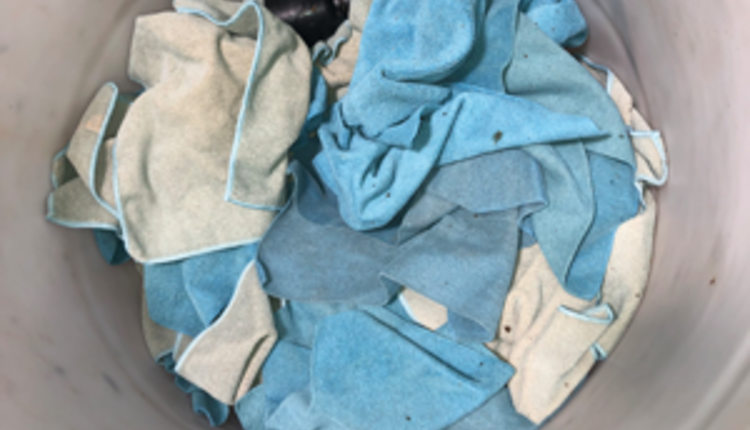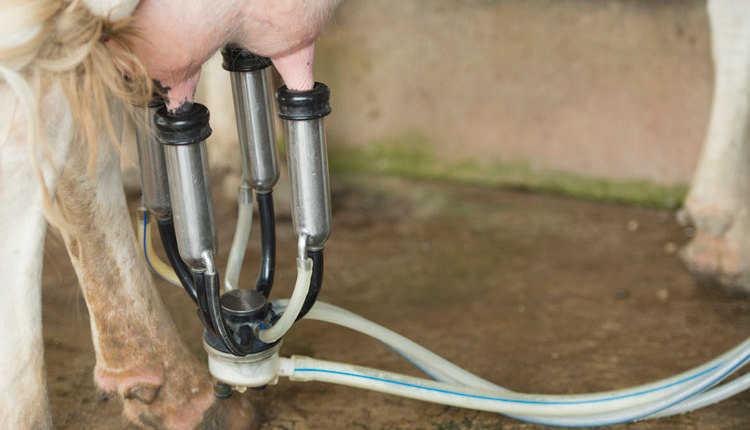The authors are with Quality Milk Production Services at Cornell University’s College of Veterinary Medicine.

Often, we think of automated milking systems (AMS) as new technology that reduces labor to milk cows; however, we may forget about the importance of testing the mechanical function of the AMS equipment because everything is automated.
Automation is often misinterpreted because we believe that everything from milk flow to vacuum stability is always monitored and that equipment function reports are provided as real-time data. From our experience, though, with greater automation there needs to be more monitoring of milking equipment function to reduce milking machine-induced mastitis.
The goal when milking a cow is to harvest milk in the shortest time possible without putting the cow at risk for machine-induced mastitis. How do we monitor AMS milking equipment function to reduce this risk?
Know what to measure
Milking time tests that are performed to monitor milking equipment in a conventional parlor should also be done with AMS. These are teat-end vacuum during peak milk flow, vacuum stability, pulsation function graphing, and a milking unit fall-off test.
The goals of the milking time tests are to show that under milking conditions, vacuum is stable, there are no large irregular vacuum fluctuations within the milking system, and all pulsators are functioning properly. If one completes the milking time tests as outlined above and the results show stable vacuum and proper pulsation phases, then the completion of the full National Mastitis Council Vacuum Levels and Air Flow Test may not be necessary.
Teat-end vacuum during peak milk as measured in the short milk tube closest to the teat should be between 10.5 inches and 12.5 inches Hg during peak milk flow. Of more importance is that most manufacturers have a desired teat-end vacuum they want to see for each liner, so the focus should be to achieve the optimal teat-end vacuum during peak flow for the liner being used.
Vacuum stability within the AMS can be measured at the receiver. Like in conventional milking systems, the goal is to have less than 0.6 inches Hg of vacuum drop or rise at the receiver during milking.
Most AMS systems are designed that when a teat cup falls off, the vacuum to the teat cup is immediately turned off. This does help with reducing vacuum instability within the system. Most AMS vacuums also have one vacuum pump that serves two or more boxes, and large irregular vacuum fluctuations of above 0.6 inches of Hg are seen when one box is prepping a cow or having difficulties attaching a teat cup. Training the AMS for the attachment of the prep cup and teat cups and routine cleaning of the camera lens will assist in reducing these large irregular vacuum fluctuations.
Graph pulsators to determine if the pulsators are functioning properly on a routine basis. Pulsators function by alternating between atmospheric pressure and vacuum in the pulsation chamber. When there is vacuum in the pulsation chamber, milk is being harvested, and when the liner collapses due to air rushing into the pulsation chamber, the teat is massaged. The two sides of the pulsator should have very similar time spent in the vacuum and rest phases.
The desired pulsation settings are dependent upon the liner being used and the farm’s goals. Still, we typically target around 500 ms of B-phase (milk phase) and at least 220 ms of D-phase (rest phase). When too much time is spent in the vacuum phase or too little time in the rest phase, there is a rise in congestion at the teat end. More teat-end congestion during milking leads to it taking longer for the teat canal to close after milking. Pulsators should be adjusted so that we are not putting teats at risk for milking machine-induced mastitis.
Two other areas of machine function that should be evaluated with AMS are postmilking strip yields to evaluate overmilking and postmilking teat dip coverage. We may not put detacher settings and dip coverage in the same “box” as vacuum stability and pulsation settings, but with these processes being automated, they may also contribute to milking machine-induced mastitis if they are not functioning properly. Therefore, monitoring overmilking and teat dip coverage is important.
Do it frequently
How often should the milking time tests be completed to reduce the risk of milking machine induced mastitis? Given that more cows are milked per individual robot than an individual stall on a large rotary, the importance of routine testing of milking machine function with AMS cannot be understated. With available testing devices like the VaDia, one can easily monitor teat-end vacuum monthly with little time spent gathering data. Graphing to check pulsation phases and vacuum should be completed every four to six weeks.
From a milking machine-induced mastitis standpoint, it is more refreshing to monitor equipment function and solve the issue immediately versus the classic option of waiting for failure and then putting out the fire. We hope this has inspired parlor and AMS managers to monitor milking equipment function on a routine basis to reduce the risk of milking machine-induced mastitis.










